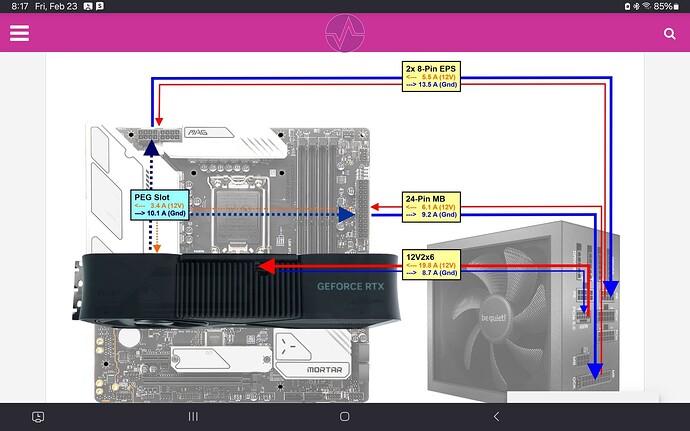You’ve been told, yes? What determines capacitance? The distance and / or the dielectric or both? Hum, seems we’ve touched on this numerous time but again this is something fundamental we need to be aware of…
- Capacitance - driven by the dielectric (some) and distance (a lot).
- Inductance - Purely proximity and field line controlled. Dielectric makes zero difference.
If I were to reduce the dielectric from 8-mil to 1-mil I’d have a capacitance monster on my hands with no way to fix it. The capacitance and inductance are a LOG function of distance to large increases with proximity of the plates. I can reduce inductance with careful understanding of field lines, but capacitance is a stooge of distance and the stuff between the plates. One move impacts the other, too, as I get the wires CLOSE to hold inductance low, I have to use a good dielectric and average distance (why it is braided in a up-down pattern) between the plates to keep C in check.
Remember, we really want no reactance in our cable. Amplifiers like resistive loads and drive that portion of the reactive vector. As mentioned above, the “equivalent” dissipated power is lower than the rated impedance as it also has a reactance associated with it since cables become capacitors as frequency falls.
All the stuff that is done; add inductance to amp outputs, use Zobel networks, even use more resistive (planer magnetic) drivers and such is to lessen the reactance of a load on the amplifier.
Look at power distribution models. They calculate and measure the load factor and put stuff across the lines so the power factor is “resistive”. This makes the load much more efficient and less wasteful. This “idea” isn’t new at all. Where we have power applied, we hate reactance. Reactance doesn’t dissipate power but stores it in the time domain. Last I checked, speakers are supposed to use power to make sound, and right now. They don’t. The reactive impedance tells you that.
You can’t forget this stuff. I think I caught you not reading your homework! All of this is covered in gory detail for you in the tech papers. When we are at the point we have to ask less questions, not more (or the same ones over and over), we are at the point to probably even make something. School is the many questions. After school is over and you are working is the self taught fill in the gaps time and to actually make something. Not your fault yet Arenith. It takes years to patch all the cause and effects together in your head since every move effects everything else. You need to know this ahead of time when the multi-million dollar machine is spitting out real expensive stuff at production speeds. You can’t promote an empty head and expect results. Titles are great, but the product is what counts. What was the title of the people who made the door assembly on that plane? Do you care sitting next to it? Or, do you want experienced seasoned (as in time) designers instead?
The problem with something seemingly simple like cable, is it isn’t. Sure, you can make anything move some power or signal but optimize it? And even understand that you are making proper changes? Do it so the performance is in proper economical steps that build, and not destroy, the previous steps just to be “different”? Some sell cars like they are rocks, some sell cable like they are weather patterns, I sell cable like it is cable. I can’t get around bad designs as that’s what we sell. To sell that, I need the proper measurements to show I actually have done what we promise you. I have to do what I promise myself I’ve done. That’s what I was paid to do for 35 years at Belden. If I don’t care about myself I sure won’t care much about you.
Sorry ahead of time Arenith, but making stuff at home is one thing, making planes, cars and bridges is another big step. Unless you have a grounded approach to your work you will let people down and this isn’t taught anymore. It was, but not now. We took ethics classes for engineering. My condensed versions are;
- You are what you do, not what you say.
- You become who you hang with.
- Leave people and places in equal or better shape than when you arrived.
I can’t design crappy stuff and do any of the three tenets above. That part is pretty simple to figure out.
Best,
Galen
